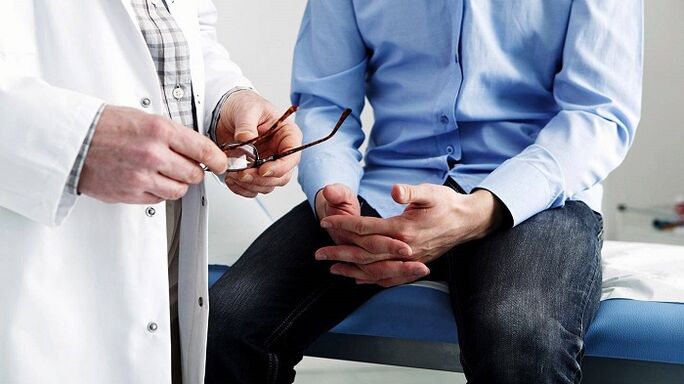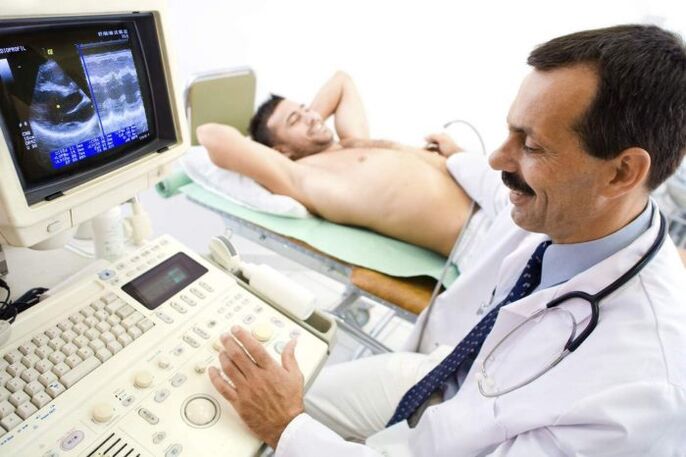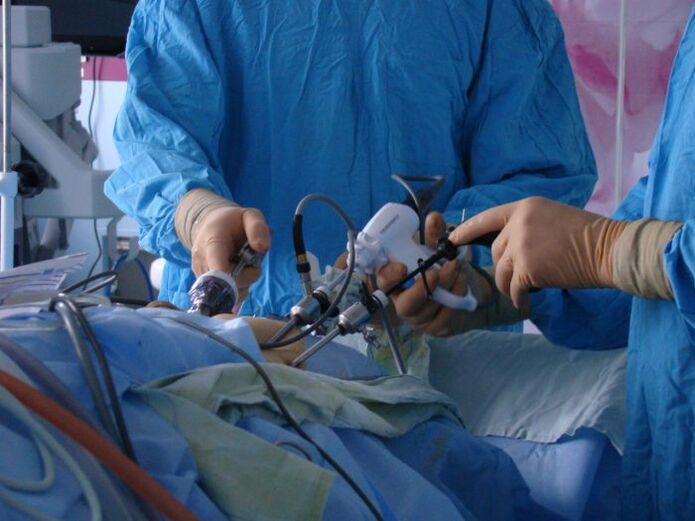Pain during urination, burning sensation in the urethra, erection problems and frequent going to the toilet are all symptoms of the inflammatory process in the prostate. What is prostatitis? The disease is multifactorial in nature, the etiology of which is due to a combination of provoking factors that cause inflammation. In medical practice, pathology is classified depending on course, pathogenesis and other aspects. Let's think about what is the root cause of this disease, what symptoms manifest itself and how it is treated.
What is prostatitis?

To understand what prostatitis is in men, you need to know what a glandular organ is. The prostate is the internal organ of a man. In appearance, it resembles a "heart" or "chestnut". Ancient doctors called this organ the "heart of the second man".
The functions of the glandular organs are as follows:
- Secretion production, which is a liquid with a specific odor;
- Protects the prostate gland from infection;
- Maintain full erectile function;
- Synthesis of the hormone testosterone;
- Ensure normal urination process.
The production of secretions in the prostate is always observed. On the stronger sex representation, it enters the urethra in the process of sperm secretion. Prostate secretion increases the volume of semen, contributing to the preservation of the vital activity of sperm.
To your knowledge, prostatitis is a common disease diagnosed in 80% of men, of which 30% are diagnosed at the age of 20-40 years. According to static studies, pathology is observed in every tenth male.
If the ultrasound examination shows swelling of the prostate gland, a focus of inflammation in it, then this is prostatitis. In most clinical pictures, the inflammatory process continues in tandem with the formation of calculi. The male organ is surrounded by the urethral and seminal ducts, and edema causes ureteral compression. As a result, the symptoms of the dominant disease are revealed - problems during urination - pain, cramps, burning.
When the inflammatory process occurs, the qualitative and quantitative composition of prostate juice changes, as a result, sexual desire decreases, erections worsen, potency decreases.
Causes and symptoms of prostatitis

Speaking of prostatitis, it is impossible to mention the exact cause of the inflammatory process. Many doctors agree that the etiology is based on a combination of certain factors.
The appearance of prostatitis is due to the following reasons:
- Infectious pathology transmitted during sexual intercourse.
- Violation of blood circulation in the pelvic organs. This leads to an inactive lifestyle, overly tight underwear, jeans.
- Injury to the perineum organs, which provokes poor circulation.
- Frequent hypothermia, the presence of chronic pathology of the reproductive system.
- Hormonal imbalances, irregular sex life, prolonged abstinence.
- Inflammation in the rectum can provoke the development of prostatitis.
- Chronic constipation.
- Decreased immune status. Major sources include chronic stress, unhealthy eating habits, alcohol intake, smoking, unbalanced diet.
- Urological infections such as gonorrhea.
In fact, there are many reasons for the onset of pathological processes. Only by identifying the provoking factors can we talk about a good prognosis.
Prostatitis is acute and chronic. In the first case, a man's body temperature rises significantly, frequent trips to the toilet are observed, accompanied by severe pain syndrome and poor urine flow pressure. Often, such clinics are accompanied by a burning sensation in the perineum, a painful sensation in the rectum during defecation.
Need to know:with purulent inflammation of the prostate gland and opening of the abscess, there is a discharge of purulent mass from the urethral or rectal canal.
In chronic pathological processes, the symptoms are less pronounced. Patients were diagnosed with the following clinics:
- Low -grade fever, which does not subside for a long time;
- Pain in the genital area;
- Problems with bowel movements;
- Persistent fatigue, restlessness and undue irritability.
Difficulty urinating is a particular danger against the background of inflammation of the glandular organs. If there is no adequate treatment, it can lead to serious consequences - acute urinary retention.
Types of prostatitis

So, to learn everything about prostatitis in men, you need to consider the form of the disease. First of all, there are acute and chronic inflammatory processes. The name "sharp" speaks for itself. This indicates that there is an inflammatory process caused by the infection. In most cases, microbes, more rarely the simplest microorganisms or fungi.
If there is no therapy for this form of acute pathology, it turns into a chronic course, it can give complications in the form of benign hyperplasia of the glandular organs. Symptoms are not expressed acutely, which is a danger of this type of disease.
The etiology of chronic prostatitis is caused by pathogenic microorganisms and other causes. For example, the phenomenon of stagnation in the pelvic organs, age -related changes.
Important:Bacterial prostatitis is acute and chronic. Inflammation is provoked by bacteria - Escherichia coli and Pseudomonas aeruginosa, enterococci, Klebsiella. Most often, this type is diagnosed in men aged 20 to 40 years, in connection with other types of prostatitis, it occurs in 5-10% of clinical pictures.
Other types of inflammation of the prostate gland:
- This form of calculus prostatitis is characterized by an inflammatory process that develops as a result of the formation of stones in the prostate. Often it is diagnosed in patients of the elderly age group who have neglected treatment of the acute form of the drug. Neglected calculus disease causes reproductive dysfunction, infertility, impotence, adenomas and other complications.
- The stagnant form of the disease often occurs in a chronic, non -infectious etiology form. The main reason is blood stagnation in the pelvic organs, for example, in the event of circulatory disorders in the pelvis or stagnation of prostate secretions due to irregular intimate life.
- Infectious diseases develop due to the activity of pathogenic bacteria, in most pictures, tests detect E. coli. There are acute and chronic courses, the clinic is similar to the bacterial species.
- The purulent form is the most dangerous type of pathology. In medicine, purulent prostatitis is classified into other types. Catarrhal develops against the background of weak immune status in tandem with the development of sore throat and flu. Follicular prostatitis is already the second stage of purulent disease; there is a discharge of pus into the prostate, which is accompanied by a severe pain syndrome and high body temperature. The parenchymal form is a severe form that requires timely treatment. With abscesses of glandular organ tissue, they speak of abscess disease; therapy should be started immediately, as there is a threat of sepsis.
The treatment regimen for inflammation of the prostate gland due to certain types of pathology, respectively, it can differ significantly. You can combine medication with physiotherapy procedures and alternative therapies.
Diagnostics of prostatitis

To diagnose inflammation, the doctor collects the patient’s anamnesis, then prescribes laboratory and instrumental research methods. They allow, based on certain indications, to make an error -free diagnosis.
Fact:you can suspect prostatitis by examining the rectum on the prostate gland. Pain in the anterior rectal area and increased organ size are hallmarks of inflammation.
After palpation of the rectum, the following diagnostic methods are prescribed:
- Ultrasound examination reveals organ measurements, symptoms of inflammatory processes, changes in soft tissue structure;
- The study of prostate secretion allows you to identify its composition and deviation from the norm;
- Studies of urine and smears from the mucous membranes of the urethra will help determine infectious diseases transmitted during sexual intercourse;
- Assessment of hormone status. Excess hormones can lead to pathological proliferation of glandular organ tissue, and a decrease in hormone concentrations can cause them to malfunction.
In the diagnosis of a physician, it is not the inflammation of interest, as it can be detected by palpation of the prostate gland, but the cause of the disease. However, determining the right provoking factors allows you to prescribe effective therapy.
Methods of disease treatment

The treatment of prostatitis is always a complex process that involves the intake of various medications. It is not forbidden to use traditional methods of therapy with the permission of the attending physician.
Therapeutic activities include the following:
- Antibacterial pills, immunostimulatory drugs, anti-inflammatory drugs. Dosage, frequency and duration of use are determined individually. Medicines can be purchased at pharmacies, many of which require a doctor’s prescription.
- Physiotherapy manipulation - the use of magnetic fields, leech therapy, ultrasound and laser treatment.
- Massaging the prostate gland. It allows you to strengthen the reproductive system, normalize blood circulation in the prostate and pelvic organs.
Traditional methods of therapy include decoctions and infusions based on medicinal ingredients. Patient reviews noted the high therapeutic efficacy of red root rhizomes, licorice and marshmallows.
Important:to cure prostatitis, you must adhere to a prescribed treatment regimen. Self -administration, even the most effective medication, may not provide the desired results. There is no single therapeutic tactic: what helps one patient endangers the second patient.
Precautions
Prostatitis is one of the more preventable pathologies. Doctors have long made preventive measures to get rid of this disease. Prevention is primary and secondary. In the latter case, this is intended to prevent recurrence of chronic diseases.
Precautions:
- Physical activity;
- Frequent sexual intercourse;
- Exclusion of unclear sexual intercourse;
- Timely treatment for all pathologies;
- Preventive examination by a urologist;
- Rational eating, rejection of bad eating habits.
Prevention of inflammation of the prostate gland does not require much time and investment of funds, and the effectiveness of such measures is undeniable.
Prostatitis is a common disease. The rate of self -healing is very low. Lack of adequate therapy leads to chronic disease, which periodically worsens and can lead to organ hyperplasia or oncology.































